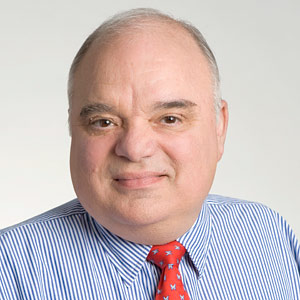Advertisement
Teacher Of The Year: Wall Street No Preparation To Manage A Classroom
Sharon Hessney used to be a financial analyst. But years ago, she gladly gave up her high-paying Wall Street job to teach critical thinking skills to high-school students -- most recently in Boston's public schools.
"I don't think anything on Wall Street prepared me to manage a classroom of teenagers," Hessney says. "Absolutely nothing, OK?"
Last year, she received a Presidential Award for Excellence in Mathematics and Science Teaching, one of two teachers from Massachusetts to win the award. She was honored at the White House.
We stopped in to her AP Statistics class at the John D. O'Bryant School in Roxbury, an exam school, where just days before the AP exam, she was asking the toughest of questions:
"What do you want for lunch?" she asked her students. "I'm making you sandwiches -- so if you want ham, if you want vegetarian, write that down, because I need to know. OK?"
Hessney personally makes and bags around 20 lunches for her students before the AP exam at a school where lunch is free because so many students can't afford to pay.
Hessney personally made and bagged lunches for every one of her students for the day of the AP exam. Feeding the body is important in feeding the mind, Hessney says, and at the O'Bryant, school lunch is free because so many students can't afford to pay. So she takes it upon herself to ensure that they're well fed on test day.
Consider that before Hessney got to O'Bryant, she estimated something like three students had passed the AP Statistics test in the five years the school had offered the course.
In the first year Hessney was there, 16 of her 21 students passed.
Feeding her students was not something she had to think about before she came to Boston schools four years ago, when she taught in the suburbs.
"The really big difference is, for most of my students, I'm the only one they're going to be getting information and learning mathematics from," she said. "They can't go home and ask their parents, they can't usually go home and ask brothers and sisters, no one is going to get them a tutor. So they either get it from me, or they don't get it."
Advertisement
That lack of help outside the classroom is part of the reason Hessney is so big on "face time" — the number of minutes and hours her students spend with the material. When she started teaching the AP course, she pioneered a summer program at O'Bryant, which requires all students who sign up for the class take part in an intensive week-long summer session where they work through the first chapters of the book before school even begins.
This summer, the district is planning to implement that model for AP Statistics courses in schools across Boston.
On the day we visited last week, we watched Hessney teach several lessons, including one in which she got math students to think about ratios by getting them to estimate the height of an object they were all familiar with.
"Who's been to the Statue of Liberty?" Hessney asked her students. "Actually been on the island...OK, who's seen the Statue of Liberty, I should see more hands? OK."
She got the kids involved in the lesson by giving them the length of one of the statue's arms. Then they measured their own arms and their heights and figured it out from there.
When Hessney talks about good teaching, she says stimulating her students and making it relevant is key — as is depth of knowledge. It's what she tells new teachers when she mentors them.
"Certainly most math teachers would know the general mathematics of a high school student," she said. "But to be able to put your head where students are, requires you to have an awful lot of understanding."
The important thing, Hessney says, is combining that depth with classroom management.
"If they're not listening, if they can't hear you, if you can't hear the students — then stop," she said. "But classroom management alone does not make a good teacher. Everyone can be paying attention, they can all be on the same page, they can be writing exactly, that doesn't mean that learning is going on. That students can talk about their mathematics, write about their mathematics, explain in context — that's learning."
Finally, Hessney says, a teacher has to always be reflecting, and adjusting his or her teaching accordingly. Right in the classroom, based on the way students are responding and what they're interested in, but also at the end of the day and in preparing to teach the same material the next year.
Hessney says she reflects both at the classroom level and at the individual student level. "What am I going to do for particular students tomorrow, or who am I going to try to find in the hallway this afternoon or between classes, and say, 'Why don't you come in' or 'let me give you this,' " she said.
"When you're teaching 120 kids, that's a lot of kids to reflect on," she acknowledged. "But I always feel like, if every day you hit a few more, then you're ahead of the game."
This program aired on May 26, 2011.
